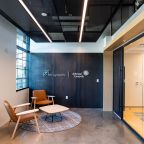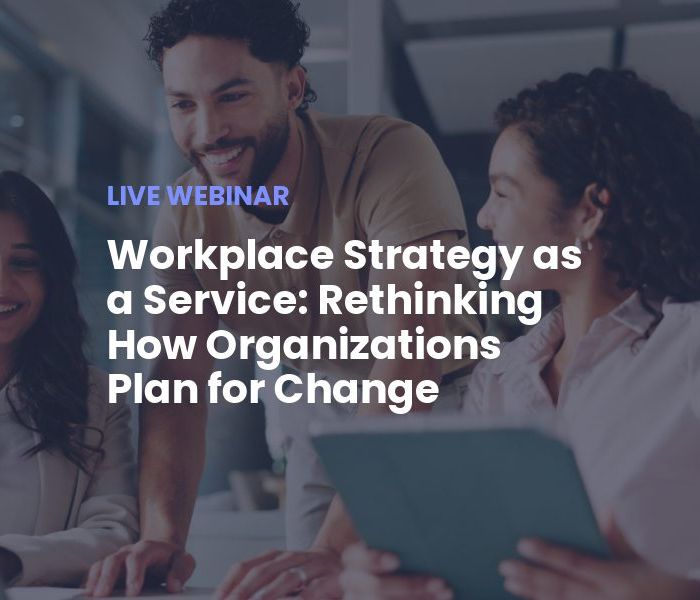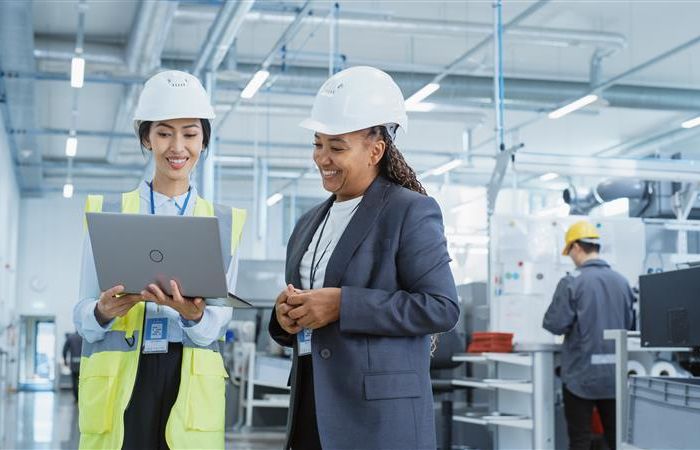 The employee-centric workplace is not just about beanbag chairs and attracting new employees. For the record, I have nothing against beanbag chairs! Even the hippest, coolest environment can look great from an outward aesthetics perspective, but that doesn’t guarantee a harmonious workplace for the long-term. A true employee-centric mindset is one that organizations adopt for their entire workforce, the environment, as well as those less tangible variables. Ann Frey, a Corporate Leadership Coach, says it’s best when she defines employee-centric organizations as ones who “create an environment where you honor your employees, where you take care of them, so they can take care of your customers.” I love this definition. It not only addresses the needs of employees, but also highlights the fact that optimal customer experiences are directly related to organizational environment and culture.
The employee-centric workplace is not just about beanbag chairs and attracting new employees. For the record, I have nothing against beanbag chairs! Even the hippest, coolest environment can look great from an outward aesthetics perspective, but that doesn’t guarantee a harmonious workplace for the long-term. A true employee-centric mindset is one that organizations adopt for their entire workforce, the environment, as well as those less tangible variables. Ann Frey, a Corporate Leadership Coach, says it’s best when she defines employee-centric organizations as ones who “create an environment where you honor your employees, where you take care of them, so they can take care of your customers.” I love this definition. It not only addresses the needs of employees, but also highlights the fact that optimal customer experiences are directly related to organizational environment and culture.
As a facility management organization ourselves, we can greatly affect a positive employee-centric workplace, which, in turn, creates a customer-centric workplace. There are 7 essential components of an organization which are required to put the employee front and center. In this post, we’ll define each component, explore why it’s important, and provide examples of how you can make changes to your facilities to build an employee-centric culture.
Positive Culture
 Culture is defined as the personality of the organization and embodies the beliefs and values of a company or organization. Workplace culture not only encourages employees to interact based upon embedded attitudes and traditions, it also considers the space where work is performed. A company’s culture is directly tied to the employee experience. According to MIT research, enterprises with a top quartile experience achieve two times the innovation, doubles the customer satisfaction, and 25 percent higher profits than organizations in lower quartiles. A positive culture is directly tied to the other components of an employee-centric workplace, including working productivity, turnover, and general wellness or absenteeism. Workspace design can be a physical manifestation of a company’s culture – from lighting and break rooms to worker mobility policies and smart building technology.
Culture is defined as the personality of the organization and embodies the beliefs and values of a company or organization. Workplace culture not only encourages employees to interact based upon embedded attitudes and traditions, it also considers the space where work is performed. A company’s culture is directly tied to the employee experience. According to MIT research, enterprises with a top quartile experience achieve two times the innovation, doubles the customer satisfaction, and 25 percent higher profits than organizations in lower quartiles. A positive culture is directly tied to the other components of an employee-centric workplace, including working productivity, turnover, and general wellness or absenteeism. Workspace design can be a physical manifestation of a company’s culture – from lighting and break rooms to worker mobility policies and smart building technology.
Comfortable Office Design
It’s no surprise that employee wellness is one of the leading concerns for employers. Rising health care costs and loss of productivity due to employees missing work because of illness, sick children, or high stress levels are the norm for organizations today. The Harvard Business Review cites 80% of both workplace accidents and doctor visits are due to stress. These numbers are driving employers to evaluate the design of their current workspace. The actual workplace impacts wellness; studies have proven that access to natural light, environmental control technologies that adjust temperatures and lightning, and physical wellness spaces create a healthier environment that improves employee productivity and well-being. With building space at least 50-60% underutilized at all times, companies are missing out on tremendous opportunities to develop working spaces that are designed with the health of the employee in mind. This is where facility management solutions and analytics software come in to play. It helps businesses uncover the possibilities, the what could-be, and most importantly, creates cost savings that can be directly invested back in to employees. It also helps you manage maintenance projects and process tickets, like that dripping ceiling tile or smell coming from a vent which may be impacting employee wellness and satisfaction.
Space Availability
 Productivity in the workplace is a measure of the efficiency of individual workers, groups of workers (cohorts), or of the overall organization as it relates to employees. Productivity is typically measured over a specific time period. In the employee-centric workplace, the workspace itself is designed to enhance efficiency and increase collaboration, thereby collectively improving productivity overall. Availability of space, such as meeting rooms or conference rooms can restrict collaboration, and increase stress levels, especially when it comes to project deadlines and plans. Remote or mobile workers coming to the office to participate in team-based exercises can also be limited by desk space availability. Integrated Workplace Management Software (IWMS) technology allows organizations to manage collaboration through booking systems, as well as room or desk reservation systems. Additionally, workplace analytics platforms help organizations understand whether they have enough of the spaces they need as dictated by the working styles and patterns of employees. Without this actionable insight, companies are flying blind, and both productivity and profits can be hindered when software solutions are available that provide visibility and the data.
Productivity in the workplace is a measure of the efficiency of individual workers, groups of workers (cohorts), or of the overall organization as it relates to employees. Productivity is typically measured over a specific time period. In the employee-centric workplace, the workspace itself is designed to enhance efficiency and increase collaboration, thereby collectively improving productivity overall. Availability of space, such as meeting rooms or conference rooms can restrict collaboration, and increase stress levels, especially when it comes to project deadlines and plans. Remote or mobile workers coming to the office to participate in team-based exercises can also be limited by desk space availability. Integrated Workplace Management Software (IWMS) technology allows organizations to manage collaboration through booking systems, as well as room or desk reservation systems. Additionally, workplace analytics platforms help organizations understand whether they have enough of the spaces they need as dictated by the working styles and patterns of employees. Without this actionable insight, companies are flying blind, and both productivity and profits can be hindered when software solutions are available that provide visibility and the data.
Agile for all Scenarios
 Business agility refers to qualities that allow organizations to respond rapidly to changes in the internal and external environment without losing momentum or compromising their defined business objectives and goals. This can mean organizational adjustments based on market trends, such as planning for growth, contraction, or a recession. It can also mean acting with urgency and capitalizing on an acquisition opportunity. Scenario planning software provides visual displays and dashboards, so you have the information you need to evaluate multiple options and then act confidently. Outdated, manual planning that involves physical drawings and the integration of multiple data sources is insufficient when it comes to modeling for the modern workspace. This approach especially falls short in the areas of cost breakdowns, and various space configurations. In the agile organization, your business must possess the ability to act with urgency while maintaining flexibility and balance for employees and customers.
Business agility refers to qualities that allow organizations to respond rapidly to changes in the internal and external environment without losing momentum or compromising their defined business objectives and goals. This can mean organizational adjustments based on market trends, such as planning for growth, contraction, or a recession. It can also mean acting with urgency and capitalizing on an acquisition opportunity. Scenario planning software provides visual displays and dashboards, so you have the information you need to evaluate multiple options and then act confidently. Outdated, manual planning that involves physical drawings and the integration of multiple data sources is insufficient when it comes to modeling for the modern workspace. This approach especially falls short in the areas of cost breakdowns, and various space configurations. In the agile organization, your business must possess the ability to act with urgency while maintaining flexibility and balance for employees and customers.
Future-proofed workspaces
 Organizations who have innovation at their core tend to support free exchanges of ideas amongst employees. These companies are also on the cutting edge of trends and power technology users. One of the greatest trends impacting workplace design and space utilization is mobility. SHRM predicts that 75% of the US workforce will be mobile by next year, yet many companies are still holding on to the traditional design of assigned desks which get very little usage. Highly effective, innovative, employee-centric companies are future-proofing their workspaces by adopting hot-desking and hoteling initiatives which are managed by IWMS and analytics software. One such client of ours is projected to save $20M in real estate costs over a 5-year period from implementing this new approach to space management, which allowed them to consolidate building while actually adding even more desk space. In order to collect and share in the brilliant ideas of employees, the responsibility is on the employer to create an up-to-date space which functions practically for today’s worker.
Organizations who have innovation at their core tend to support free exchanges of ideas amongst employees. These companies are also on the cutting edge of trends and power technology users. One of the greatest trends impacting workplace design and space utilization is mobility. SHRM predicts that 75% of the US workforce will be mobile by next year, yet many companies are still holding on to the traditional design of assigned desks which get very little usage. Highly effective, innovative, employee-centric companies are future-proofing their workspaces by adopting hot-desking and hoteling initiatives which are managed by IWMS and analytics software. One such client of ours is projected to save $20M in real estate costs over a 5-year period from implementing this new approach to space management, which allowed them to consolidate building while actually adding even more desk space. In order to collect and share in the brilliant ideas of employees, the responsibility is on the employer to create an up-to-date space which functions practically for today’s worker.
Collaboration-friendly layouts
Collaboration in the workplace is the bedrock of the innovative organization and includes small and even larger groups of employees working closely with one another to exchange ideas and information. Workplace collaboration can be encouraged and enhanced when organizations provide an environment that makes it easy and organic for employees to move from one group of people (or one department) to the next – removing barriers that might typically keep an organization siloed. Just as we discussed with productivity, cross functional collaboration is fostered via workspace design. Often this means renovating your existing space to create a more open environment, or moving departments from one floor to another, from the right side of a building to the left side. Space planning technology enables facilities teams to make decisions and accomplish complex projects with real-time, accurate data at their fingertips, which cuts down on completion time, saves major costs, and boosts time to collaboration.
Employee-Centric Mission
 A mission historically defines what a company does and helps to communicate the values of the organization. The mission is often defined in a statement that typically describes the company’s function, markets, competitive advantages and its reason for being. In the employee-centric organization, the mission is less about “what a company does,” and more about “how we all achieve it together.” Deloitte introduced the concept of the “human experience,” in its 2019 Human Capital Trends study and asserted that as people, rather than as employees, we are untied by the common objective of finding meaning in our work. This is the single most crucial factor in creating and maintaining a positive employee culture. If your workspace design and processes support your mission, you have certainly moved far beyond the beanbag.
A mission historically defines what a company does and helps to communicate the values of the organization. The mission is often defined in a statement that typically describes the company’s function, markets, competitive advantages and its reason for being. In the employee-centric organization, the mission is less about “what a company does,” and more about “how we all achieve it together.” Deloitte introduced the concept of the “human experience,” in its 2019 Human Capital Trends study and asserted that as people, rather than as employees, we are untied by the common objective of finding meaning in our work. This is the single most crucial factor in creating and maintaining a positive employee culture. If your workspace design and processes support your mission, you have certainly moved far beyond the beanbag.
From a space and facility management perspective, we need to stay informed and in step with the changes that impact each of the 7 components encompassing the employee-centric workplace. While each impacts the employee, and each brings a vastly different benefit to the table, they all have one thing in common; the workplace, or physical environment. The age of IoT is unlocking new data sources and analytics from existing building technologies such as Wi-Fi data, badging systems, thermostats, and cameras. When centrally connected and analyzed by workplace management software, the potential for what your organization can do for its employees is really endless. By embracing all of these components as a single, collective whole, the employee-centric facility team can enhance performance, productivity, wellness, culture, innovation, and even happiness–with, or without, the beanbag chair.
The Mobile Workforce Preparedness Guide
In case you missed our webcast, the recording is now available for on-demand playback. Take a step approach to readying your organization for an even more mobile and remote workforce by designing spaces with the help of technology. Introduce innovative concepts such as hot-desking and hoteling to turn your real estate in to an asset.











